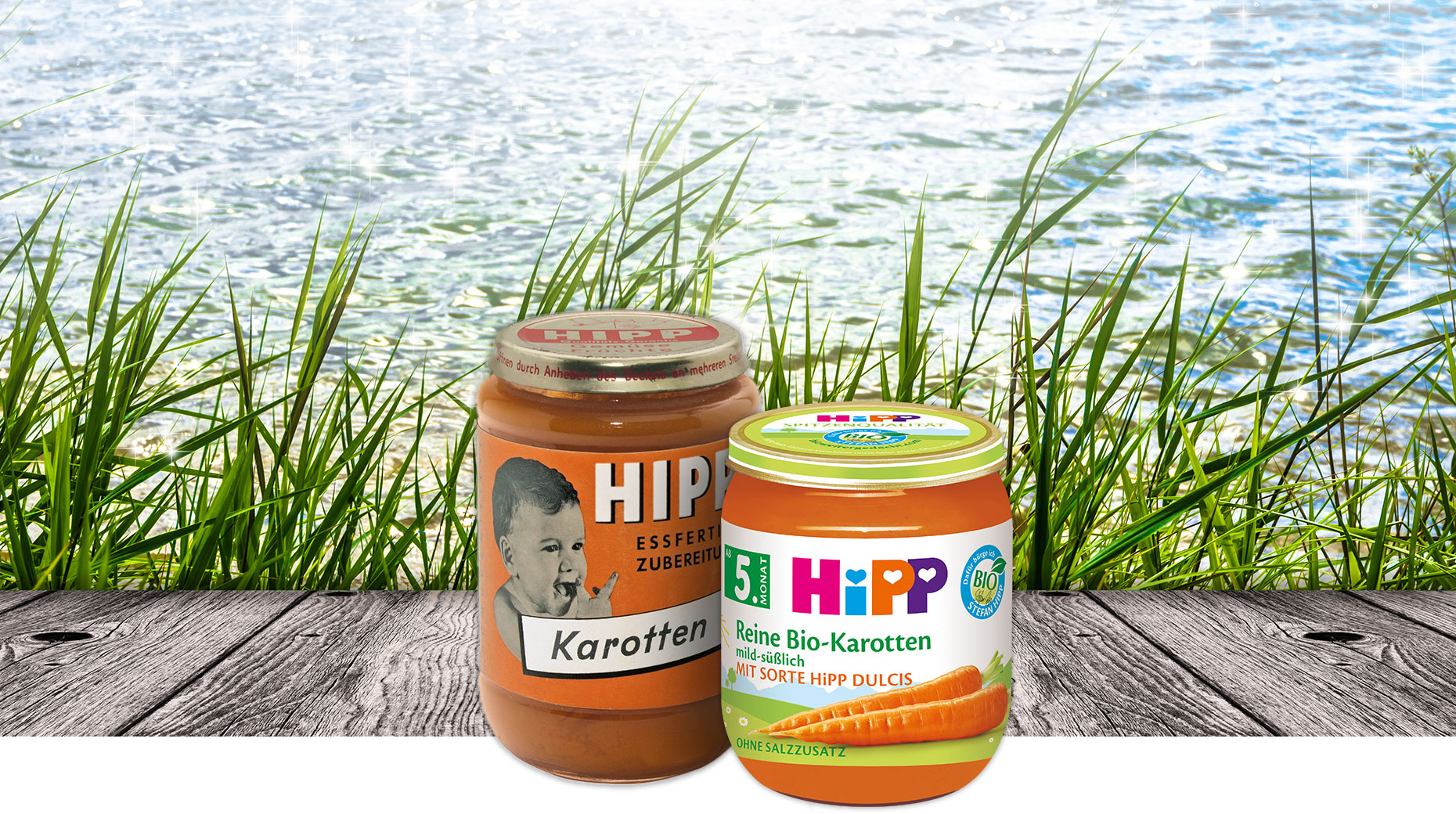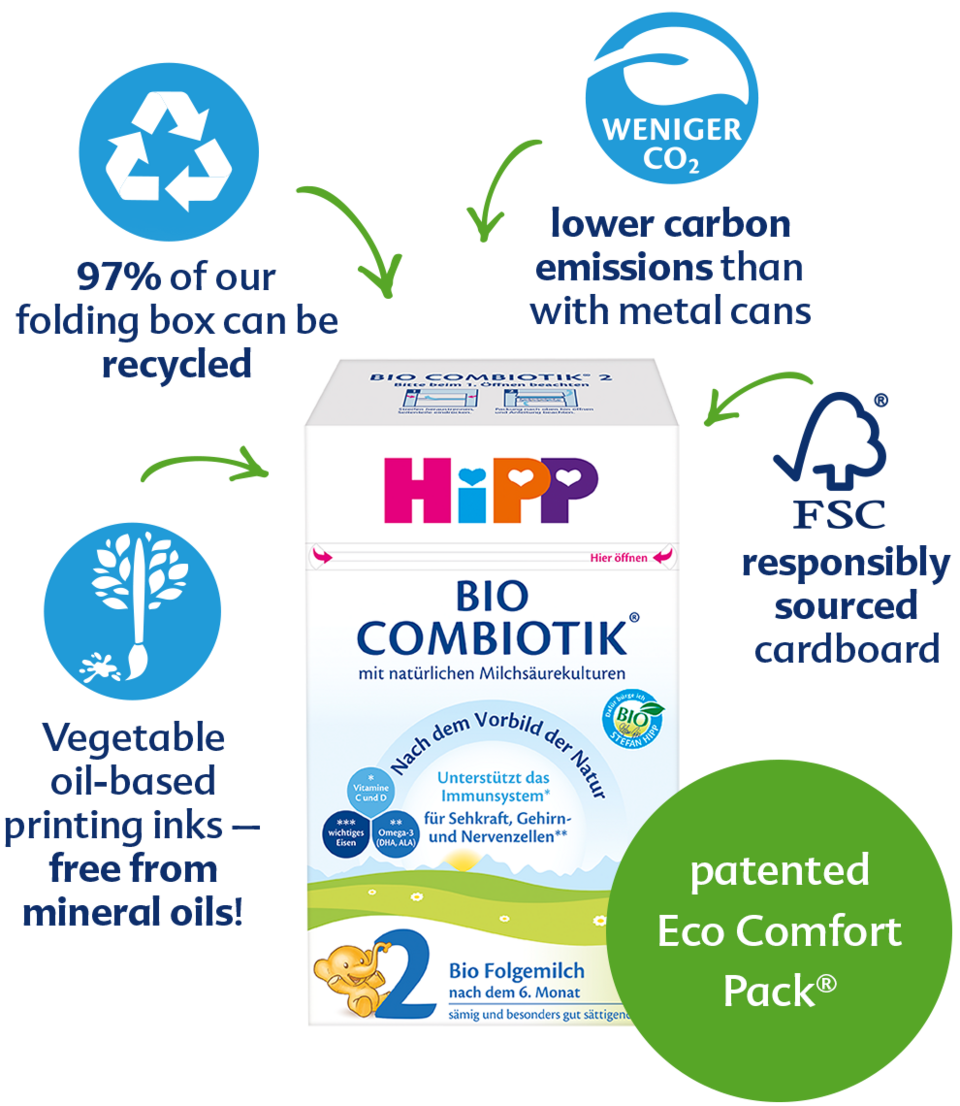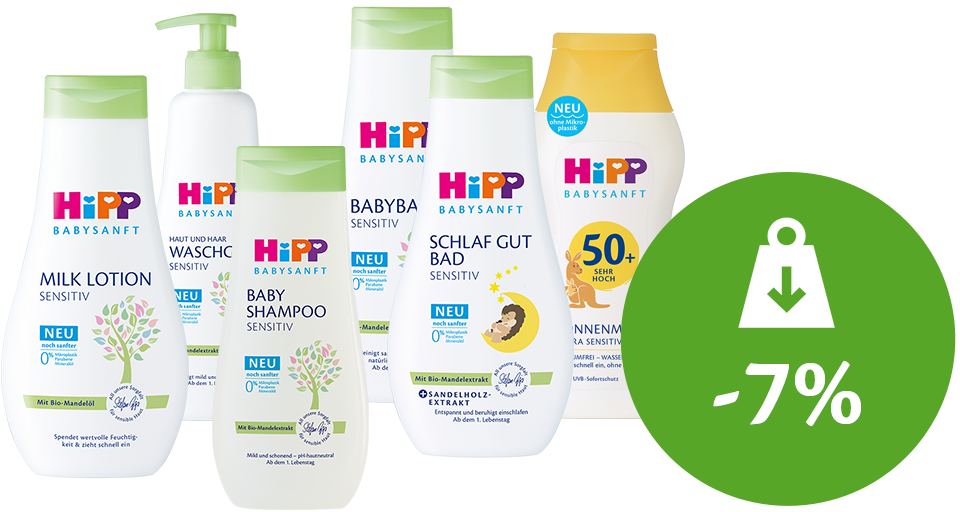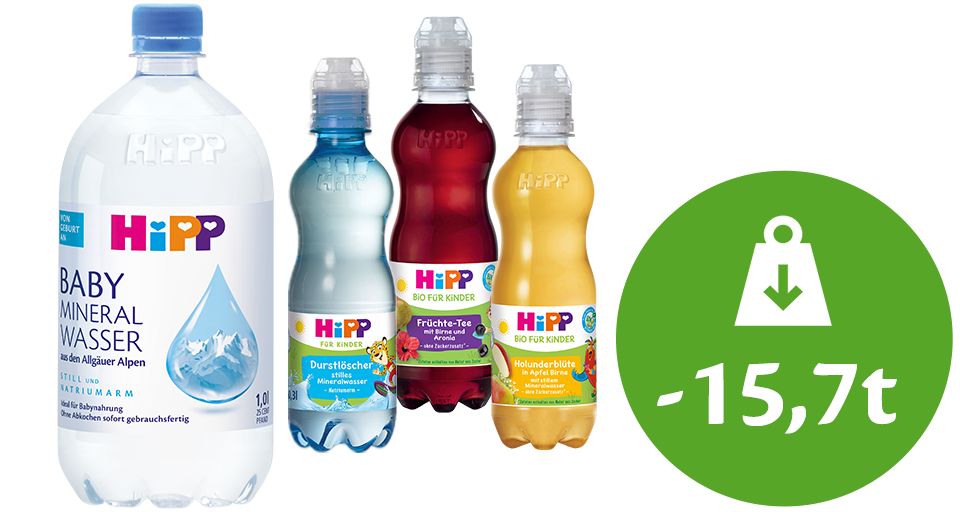From our first product in 1899 – J. Hipp’s rusk flour for children – to the present day, much has changed in food packaging. Even our staple packaging – the glass jar – has been constantly optimised. The result is a success story about resource saving that is both inspiration and aspiration when it comes to HiPP’s other packaging. Join us on our journey to even more sustainable packaging.
HiPP jars
The first HiPP carrot jar was introduced as early as 1960. Since then, the weight of the jar itself has been reduced by about 23%.




